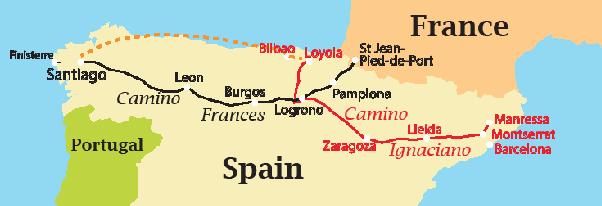In the year 813 the bones of St James were discovered in the Spanish Province of Galicia. Since then a shrine to St James was erected, then destroyed by the Moorish Army in 997, and then rebuilt. Up until the 16th Century, it was very popular for Catholics in Europe to make the Pilgrimage to Santiago de Compostela (Santiago for short). But, because of wars, etc. it became less popular. Back in the 1980s, a parish priest began remarking the most popular route, and the Camino was reborn. Since then, the Camino Frances, starting at St Jean-Pied-de-Port has been the most popular pilgrimage route having about 190,000 people complete it in 2018. Meanwhile, all the other Caminos leading into Santiago had around 130,000 people combined. Now, the Camino is more of a personal journey rather than a religious pilgrimage.
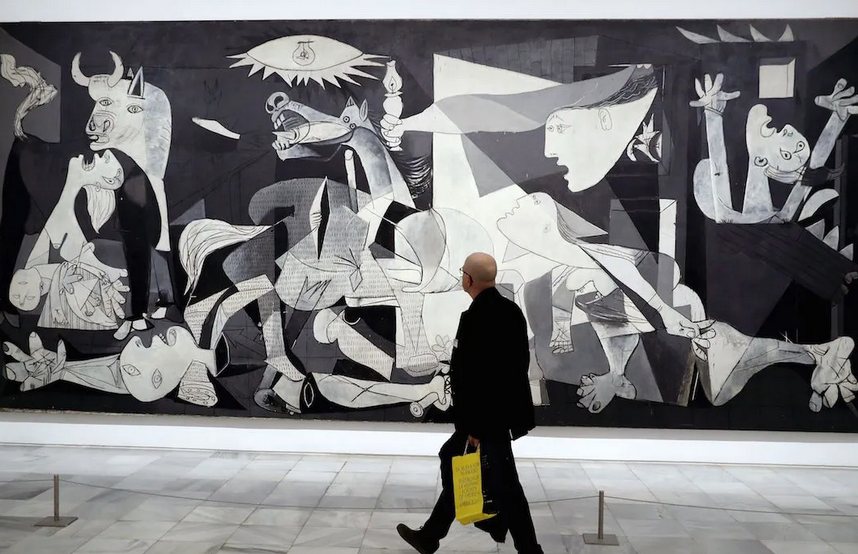 Guernica Painting
Guernica PaintingSo, what I am going to do is head for St Jean-Pied-de-Port, France. My flight from Chicago is on August 30, 2022. I will arrive in Madrid on Wednesday, August 31 and will take a bus or train to the Atocha Area of Madrid. While I am in that area, I will visit the Museo Reina Sofia (Museum of Queen Sofia.) I am going there expressly to see Pablo Picasso’s painting “Guernica.” It is an anti-war painting that Picasso painted in 1937 in response to Nazi Germany and Italy bombing a small town in Basque Country, Spain. Given what has happened in Ukraine, the painting is still very relavent today. The painting is rather large at 11 feet by 25 feet and is one of Picasso’s best known works. The next morning I plan to go to the Atocha Train Station and take a train to Pamplona. From there I will take a bus to St Jean Pied de Port, the traditional start of the Camino Frances. I will most likely stay overnight there and start hiking on the morning of September 2.
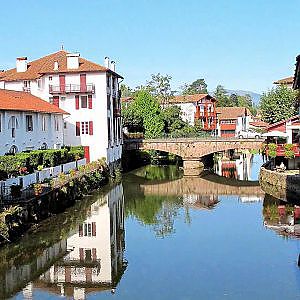 St Jean Pied de Port, France
St Jean Pied de Port, FranceAgain, Camino Frances route is the most popular route so there is lots of camaraderie amongst the hikers, etc. According to the experts, it takes 30 to 35 days to complete the Camino Frances. It is a very historic route, visiting many medieval towns and cities. For instance, Pamplona is a city that has the “Running of the Bulls” every year. But that happens in mid-July, so it should not impose a lodging problem in August/Sept.
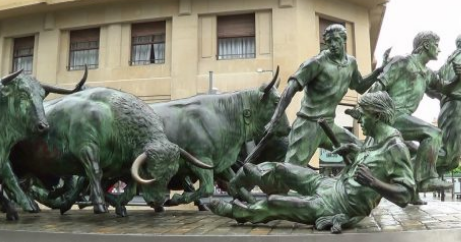 The Running of the Bulls depiction in Pamplona
The Running of the Bulls depiction in PamplonaI will be carrying minimal gear and staying at a dormitory (alberque) every night. Most of the albergues cost around ten to twenty dollars a night. These albergues usually sleep many people in one large room. On some days if I’m really tired or need some privacy, I may decide to stay in a private room at a Albergue or Hotel, but they cost more. On most days I will be passing through 3 or 4 towns where I can get water and food. So, I don’t need to bring much water and food in my backpack. I should be able to get by with a backpack weighing less than 15 lbs compared to when I go backpacking with a tent, cook kit, etc, it weighs over 25 lbs.
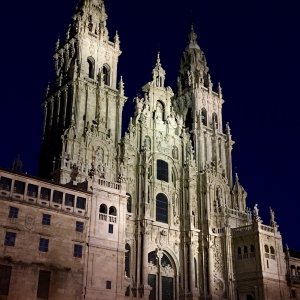 The Santiago De Compostela Cathedral
The Santiago De Compostela CathedralAfter we reach Santiago in late September, I may continue and walk another 3 days to Finnisterre, also known as the “End of the World.” That’s because back in medieval times they actually thought it was the end of the world.
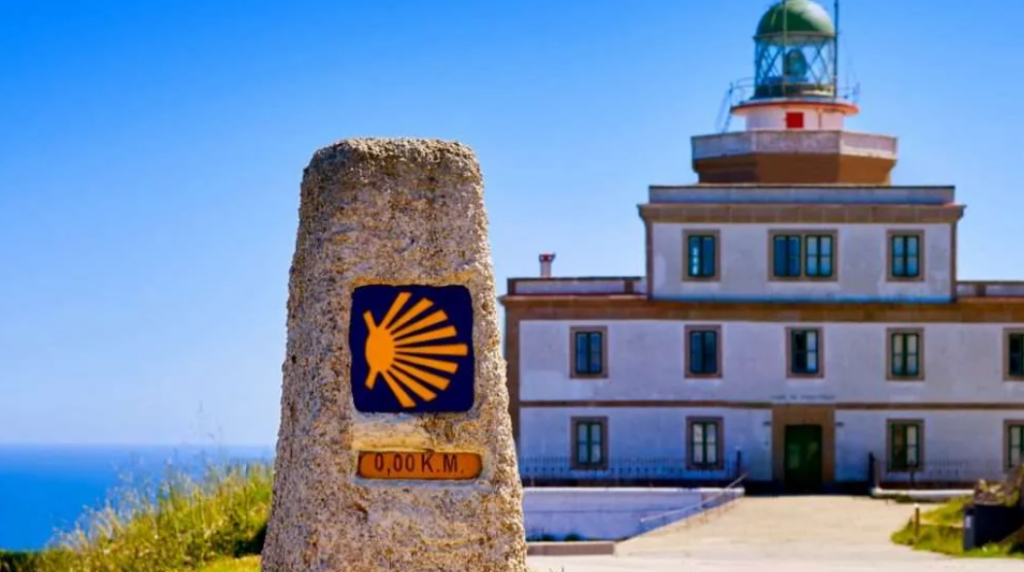 The Lighthouse at Finnesterre
The Lighthouse at FinnesterreAfter that I am planning to head to to Loyola, near Bilbao, Spain. Loyola is the birthplace and boyhood home of St Ignatius, founder of the Jesuits. In 1522, Ignatius left his home after recovering from a wound he received during the Battle of Pamplona. From Loyola, he traveled over 400 miles over to Manressa, near Barcelona, where he would eventually write his religious doctrine called the “spiritual exercises,” the basis of the Jesuit method of prayer.
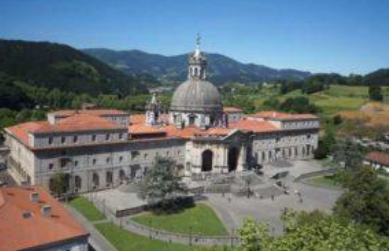 The Sanctuary of Loyola
The Sanctuary of LoyolaThe Camino Ignaciano is the route that Ignatius used during his trip. The Camino is only a few years old because a Jesuit Priest first marked the route in 2013. Most of the notable people hiking this route have been Jesuit Priests or Students from Jesuit High Schools or Colleges. There are few people hiking this route, so there isn’t very much camaraderie amongst hikers along this route. The only exception to this is near Logrono where the Camino Ignaciano and Camino Frances uses the same route for 10 miles. Plus, the Camino Ignaciano goes through a desert called the Monegros, which is located west of Zaragoza.On one night, pilgrims may have to sleep in the desert because there are no accommodations nearby.
So, basically, I believe that hiking the Camino Ignaciano will be quite different than hiking the Camino Frances. There will be some parts where there will be very few people and even less hikers. However, the last few days of the Camino are quite good. There is the Shrine at Monserrat, which has the Black Madonna and then St Ignatius’s Cave in Manressa where he wrote the Spiritual Exercises. And nearby is Barcelona which is known for the Gaudi Cathedral.
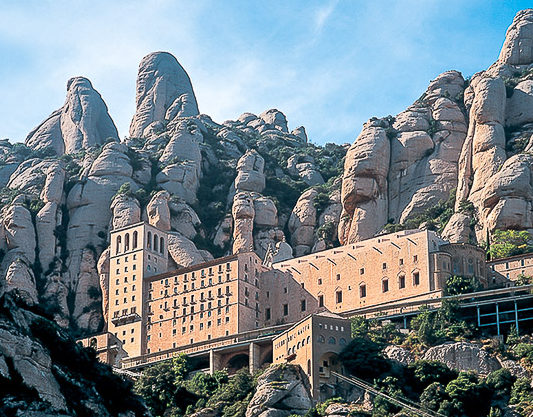 Montserrat
Montserrat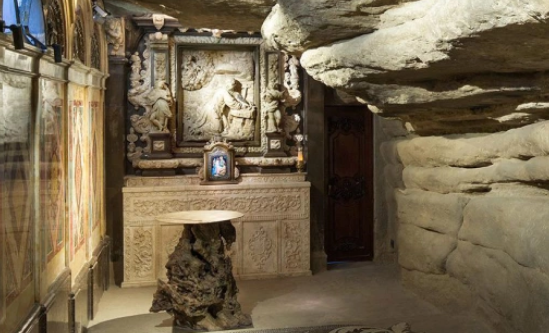 Cave where Ignatius wrote the Spiritual Exercise
Cave where Ignatius wrote the Spiritual ExerciseSince the days of St Ignatius, the Jesuits have created the largest education system on earth. They have dozens of colleges in the U.S. including Marquette University, Boston College, Chicago Loyola University and Creighton University. They also run several Catholic High Schools mainly in larger cities. After reaching Barcelona, I will be taking a train back to Madrid where I have a November 5 flight scheduled back to Chicago. I do have a fully refundable and changeable ticket. So, I am able to change my plan if needed.
This is my basic plan. Items in it could be altered. For instance, if I get injured or tired of hiking, I could just become a tourist and not do very much hiking. I plan to blog something everyday on my website at www.tmanshikes.com and I will also be posting on my facebook page every day so my people know where I’m at.
Maybe all of this is a little ambitious, but that’s the plan

